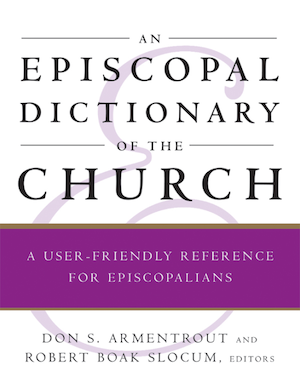Glossary of Terms
Carillon
This musical instrument of twenty-three or more cast bronze bells ranges from two to six octaves, usually set in chromatic order like the keys of a piano. Instruments with fewer […]
Carilloneur
A person who plays a musical instrument known as a carillon.
Carol
The term carol finds its origin in the French carole, a round dance in which the singers provide their own music by singing a refrain after uniform stanzas sung by […]
Caroline Divines
This unorganized grouping of seventeenth-century churchmen and scholars flourished during the reign of King Charles I (d. 1649) and derived its name from him. They furthered the theological precepts established […]
Case, Adelaide Teague
(Jan. 10, 1887-June 19, 1948). The first woman to be appointed to full professional rank in an Anglican seminary. She was born in St. Louis, Missouri, and raised in New […]
Casserley, Julian Victor Langmead
(Nov. 28, 1909-Aug. 27, 1978). Theologian. He was born in London and educated at the London School of Economics and King's College, London. Casserley was ordained deacon on Sept. 24, […]
Cassock
A long, close-fitting garment with narrow sleeves worn by clergy and other ministers. Cassocks are typically black but also may be blue, gray, or red. Bishops may wear purple cassocks. […]
Casuistry
The study of cases or situations in light of moral goods, principles, duties, and consequences. Casuistry arises from conflicts of conscience where in a particular situation more than one course […]
Caswall, Henry
(May 11, 1810-Dec. 17, 1870). Educator and writer. He was born in Yateley, Hampshire, England. On Aug. 16, 1828, Caswall left England for the United States. In Nov., 1830, he […]
Catafalque
Temporary structure used to receive the coffin of a dead person, or to simulate the coffin when the body is not in the church. It was treated with the same […]
Cataphatic
This term describes those forms of spirituality which advocate meditation “according to or with images.” It emphasizes meditation on concrete symbols or biblical events using physical and spiritual senses. The […]
Catechesis
Systematic instruction and formation of adults for baptism, initiating them into the mysteries and life of Christian faith. This instruction is not merely informative but intended to form one's outlook […]
Catechism
Outline for instruction in the Christian faith presented in a question and answer format. The Catechism appears in the BCP as “An Outline of the Faith” (pp. 845-862). Although the […]
Catechist
A teacher, lay or ordained, who provides instruction in the Christian faith. The BCP (pp 845-862) provides “An Outline of the Faith, commonly called the Catechism,” as a point of […]
Catechumen
An adult preparing for baptism who has been admitted to participation in the catechumenate.
Catechumenate
An organized time of Christian formation and education in preparation for baptism. The catechumenate is a time for training in Christian understandings about God, human relationships, and the meaning of […]
Cathedra
Official seat or throne of the bishop in the cathedral of the diocese. The cathedra is considered to be the oldest insignia of the bishop's authority to preside over the […]
Cathedral
A church that contains the diocesan bishop's seat, throne, or cathedra. The cathedral is the principal church of the diocese. As the symbol and center of diocesan ministry, the cathedral […]
Cathedral Car
Bishop William D. Walker of North Dakota faced many difficulties in his missionary work. He conceived the idea of a traveling chapel which would carry the church to those outlying […]
Cathedral Church of Saint Peter and Saint Paul in the City and Diocese of Washington, The
George Washington was the first person to suggest a “great church for national purposes in the capital city.” In 1893 Congress granted a charter to the Protestant Episcopal Cathedral Foundation […]
Glossary definitions provided courtesy of Church Publishing Incorporated, New York, NY,(All Rights reserved) from “An Episcopal Dictionary of the Church, A User Friendly Reference for Episcopalians,” Don S. Armentrout and Robert Boak Slocum, editors.

